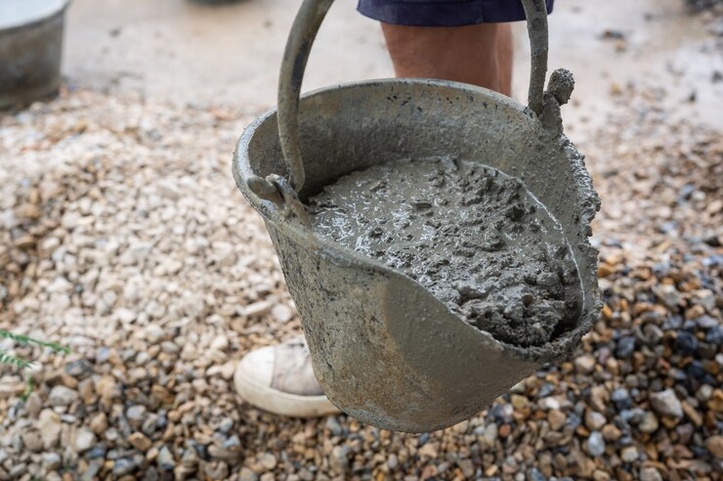In the realm of construction, achieving seamless and level surfaces is an art, and the key to this art lies in mastering the concrete screed mix. Concrete screed is a vital component in creating smooth and even finishes for floors, pavements, and other surfaces. In this exploration, we will delve into the intricacies of the concrete screed mix, understanding its composition, application, and the art of achieving precision for flawless surfaces.
Understanding Concrete Screed Mix:
Concrete screed is a blend of cement, sand, and water, often with the addition of additives to enhance specific properties. This mix is carefully proportioned to achieve the desired consistency, workability, and durability for the particular application. The screed serves as a top layer over the structural concrete, providing a smooth and level surface.
Composition of Concrete Screed Mix:
-
Cement: The binding agent in the mix, cement provides the adhesive properties that hold the screed together.
-
Sand: The sand component contributes to the strength and density of the screed. The particle size and type of sand used can impact the final texture and finish.
-
Water: Water activates the cement, initiating the hydration process that binds the mix together. The amount of water is carefully controlled to achieve the right consistency without compromising strength.
-
Additives: Depending on the specific requirements of the project, additives such as plasticizers, accelerators, or fibers may be included. These additives can enhance workability, accelerate curing, or improve overall performance.
The Art of Mixing:
The mixing process of the concrete screed is a critical step in achieving the desired properties. Consistency in mixing ensures uniform distribution of the components, preventing issues such as segregation or uneven curing. Modern construction often utilizes mechanical mixers, ensuring precision and efficiency in the blending process.
Application Techniques:
-
Traditional Screed Application: Traditional screed application involves manually spreading and leveling the screed mix across the surface. This method is suitable for smaller projects and areas where precision is crucial. Skilled workers use tools like straight edges and floats to achieve an even surface.
-
Self-Leveling Screed: For larger areas or where an extremely level surface is required, self-leveling screed is employed. This type of screed mix is designed to flow and level itself, minimizing the need for manual intervention. It is particularly useful for flooring projects where a perfectly flat surface is essential.
-
Bonded and Unbonded Screeds: Bonded screeds adhere directly to the substrate, providing a strong bond and suitable for thin applications. Unbonded screeds, on the other hand, are not physically bonded to the substrate, allowing for greater flexibility and reduced risk of cracking.
Achieving Precision and Seamless Surfaces:
-
Proper Surface Preparation: Before applying the concrete screed mix, the substrate must be properly prepared. This involves cleaning the surface, ensuring it is free from debris, and applying a bonding agent if necessary. Proper preparation sets the foundation for a seamless finish.
-
Accurate Thickness Control: Achieving the desired thickness of the screed is crucial for a seamless surface. This requires precise measurement and control during the application process. Thickness variations can lead to uneven surfaces and compromise the integrity of the screed.
-
Consistent Mixing and Application: Consistency in mixing and application is paramount. Each batch of screed mix should be prepared uniformly, and the application should be carried out systematically to avoid variations in texture and thickness.
-
Timely Finishing: The finishing process is where the art of achieving precision comes into play. Skilled workers use tools like trowels and floats to smooth the surface, removing imperfections and achieving a seamless finish. The timing of this process is critical to prevent issues like cracking or uneven texture.
-
Curing Conditions: Proper curing is essential for the strength and durability of the concrete screed. Curing conditions, including temperature and moisture levels, must be controlled to ensure the screed reaches its full potential. Inadequate curing can result in surface defects and reduced longevity.
Benefits of Mastering Concrete Screed Mix:
-
Smooth and Even Surfaces: The primary benefit of mastering the concrete screed mix is the ability to achieve smooth and even surfaces. This is especially crucial in applications such as flooring, where a level surface is essential for aesthetics and functionality.
-
Increased Durability: A well-mixed and properly applied concrete screed enhances the durability of the surface. It provides a protective layer that can withstand foot traffic, heavy loads, and other environmental stresses.
-
Customization for Specific Applications: Mastering the concrete screed mix allows for customization based on the specific requirements of the project. Different additives and variations in the mix can be tailored to achieve desired properties such as faster curing or increased flexibility.
-
Reduced Maintenance: A precisely mixed and applied concrete screed minimizes the likelihood of surface defects and issues. This, in turn, reduces the need for maintenance and repairs, contributing to long-term cost savings.
-
Aesthetic Appeal: Beyond functionality, the art of mastering the concrete screed mix contributes to the aesthetic appeal of the finished surface. Smooth and level finishes enhance the overall visual quality of the space.
Conclusion:
In conclusion, the art of precision in mastering the concrete screed mix is a cornerstone in the construction industry. Achieving seamless and level surfaces requires a meticulous approach from the composition of the mix to the application techniques. The benefits of this mastery extend beyond aesthetics to encompass increased durability, customization for specific applications, and reduced maintenance.
As construction practices evolve and projects demand higher levels of precision, the role of the concrete screed becomes even more critical. It is not merely a layer over the substrate; it is a carefully crafted element that defines the quality and longevity of the finished surface. The art of precision in concrete screed mix is, therefore, a testament to the craftsmanship and expertise that elevate construction projects to the realm of excellence.


No comments yet